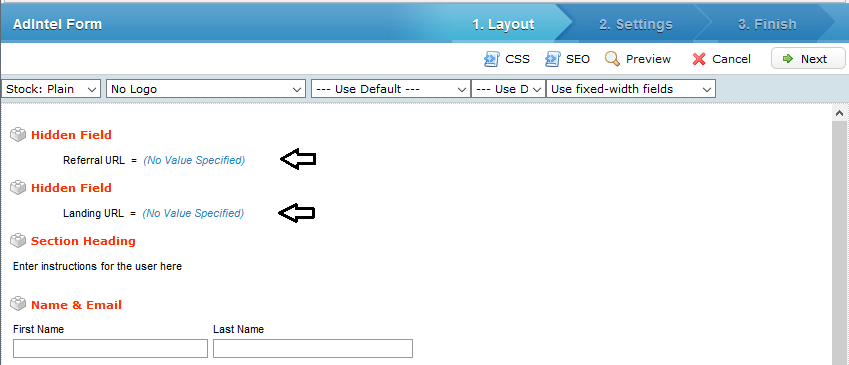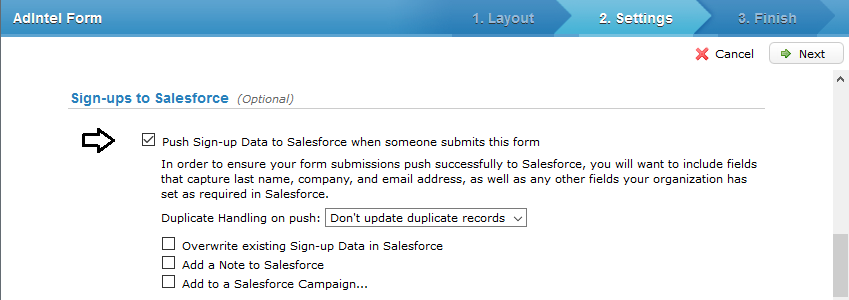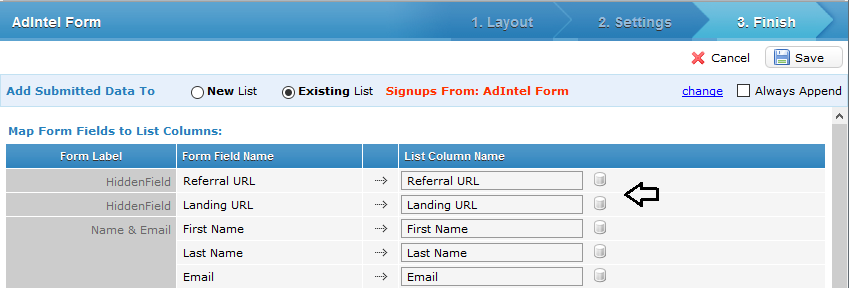2.25
- Improved Ad Performance reporting functionality with additional configuration options as shown in the below screenshot.
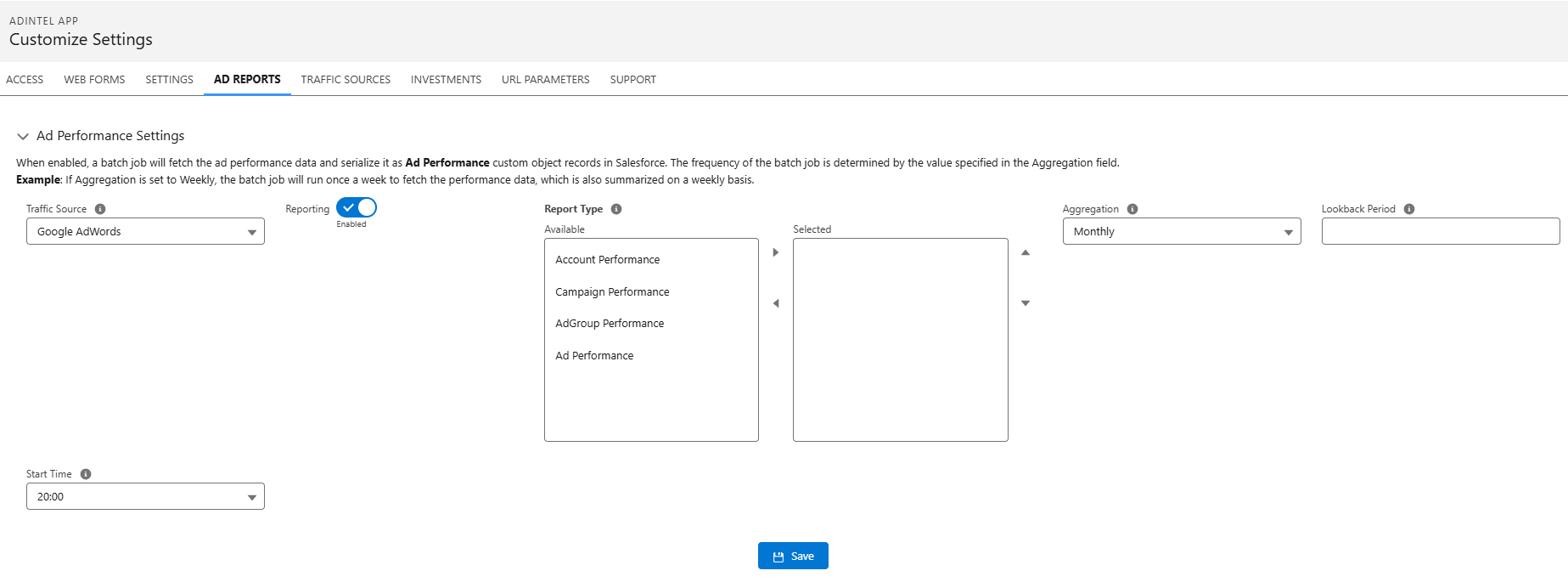
2.24
- Added Ad Name field to the Ad Performance object to support TikTok.
2.23
- Added support to TikTok Ad platform. If you are using TikTok to manager your online marketing campaigns, you can now connect AdIntel to TikTok and capture ad specific information (Campaign, AdGroup, Ad) and performance metrics (Impressions, Clicks, CTR, Conversions, Spend) directly in Salesforce.
2.22
- Added support for AdWords performance max campaigns.
2.21
- Added additional Facebook related fields to Ad Performance object.
2.20
- Added Google Analytics dashboard, which gives you an overview of views by page title; event information such as page views, user engagements, and file downloads; unique users by country, browser, device, and operating system.
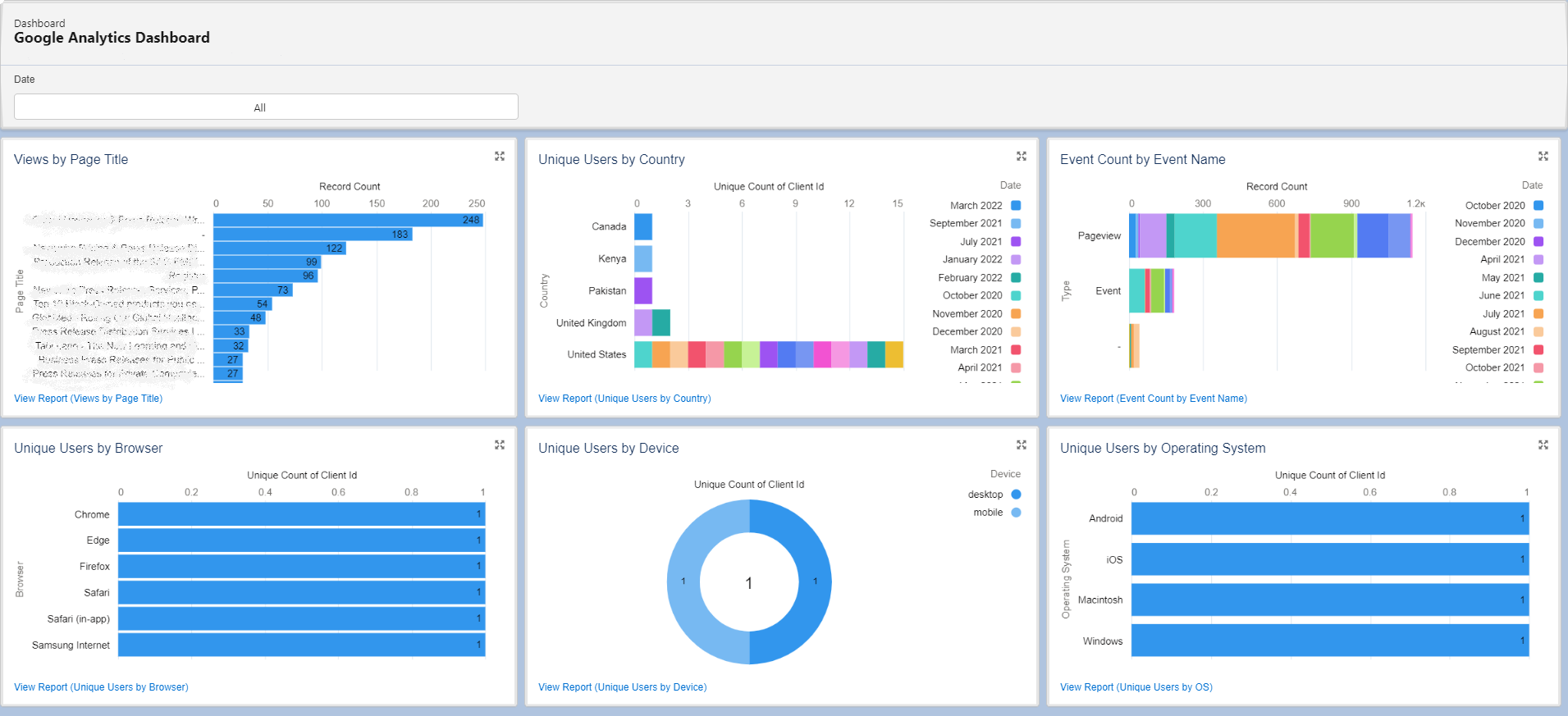
- Added an option called Web Activity Frequency. If this value is set, the App will check regularly at the frequency defined by this value if there is any latest web activity by the existing leads / contacts in Salesforce. If any such activity is detected, a bell notification is sent so that the Lead / Contact owner can check this latest activity from the AdIntel Web Activity component that is displayed on the Lead / Contact lightning record page.
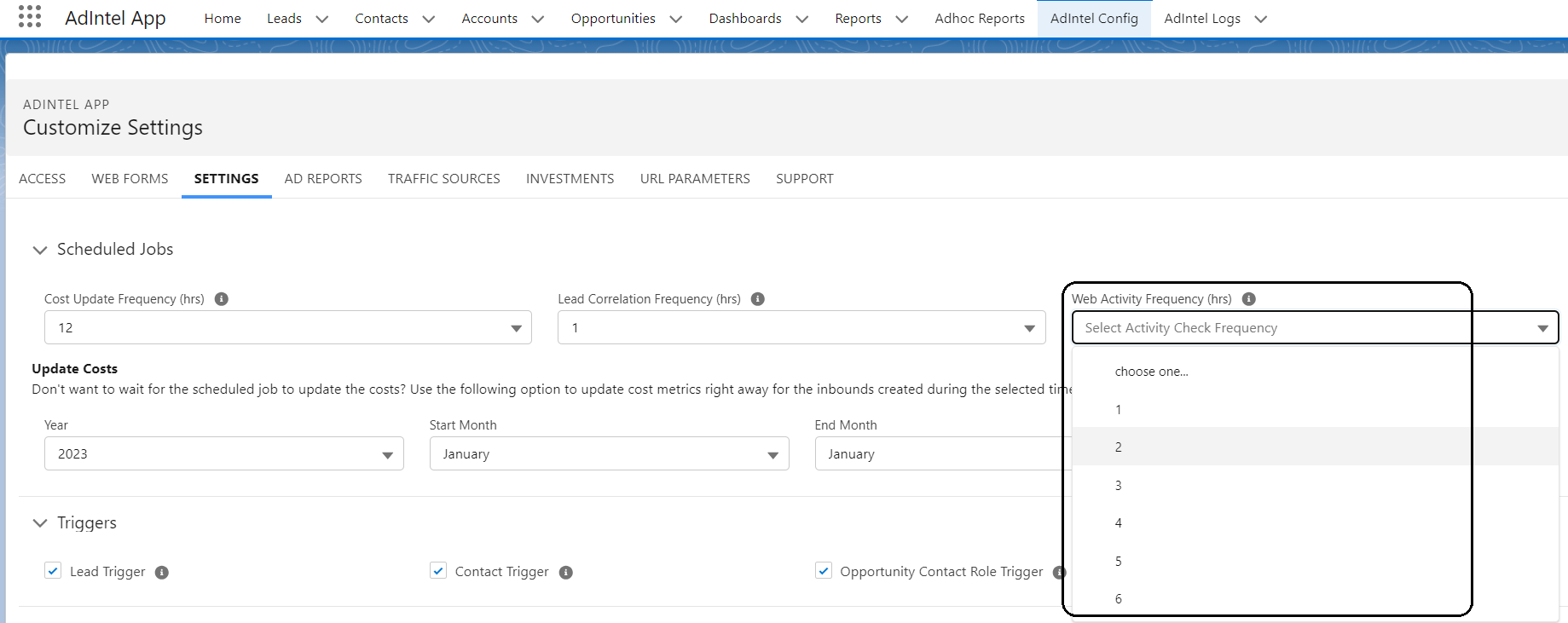
2.19
- Added new fields to the Ad Performance custom object. The Conversions__c custom field tracks the conversions for a given time period based on the interactions with online ads. The Ad_Id__c custom field stores the Ad Id. Check this link for a complete list of fields supported by this custom object.
- Added new functionality to expand the coverage of performance reports. Previously one can get only Ad Performance reports, but now you can configure the App to get Account, Campaign and Ad Group Performance reports.
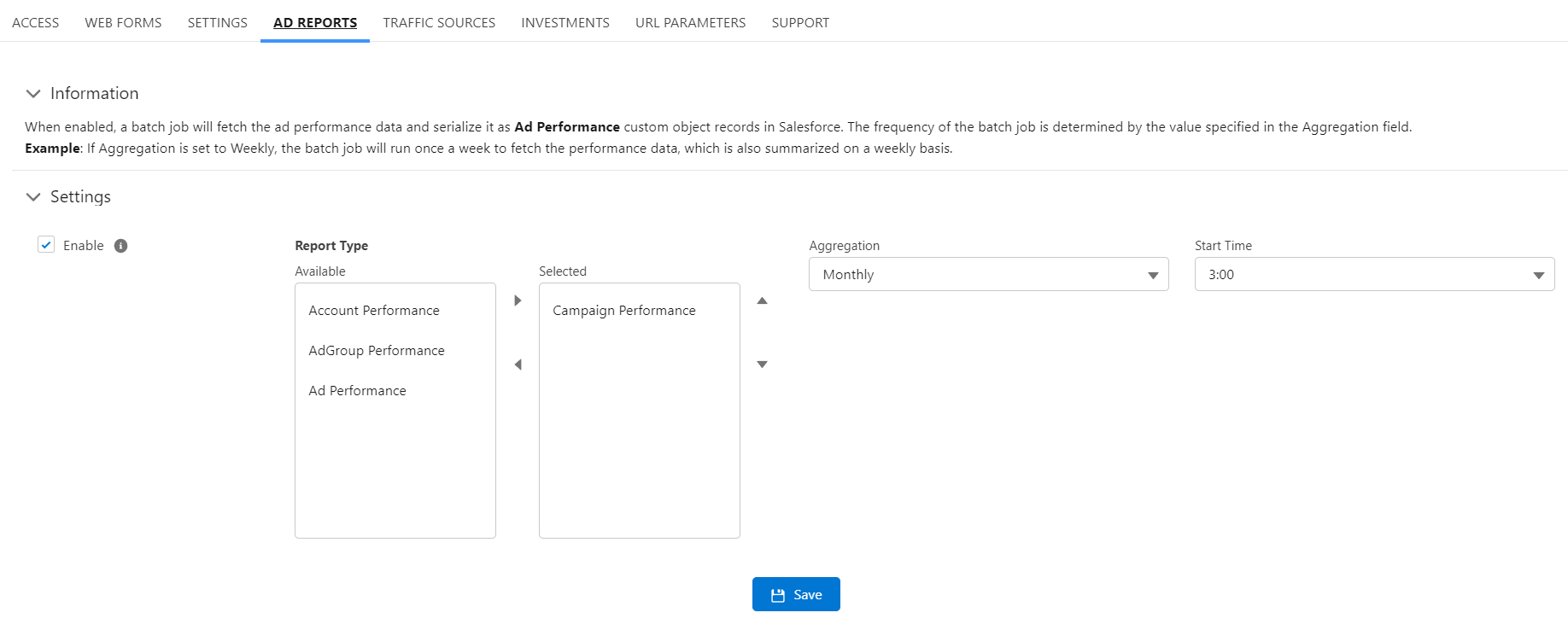
- Breaking change – Previously the standard Name field of the Ad Performance object is used to store the Ad Id. With this release, the Ad Id will be stored in a separate field called Ad Id (API Name: Ad_Id__c), and the Name field will be used to store the report type, for example AD_REPORT.

2.18
- This version is released with a few code fixes to ensure that the App works with Salesforce Summer 2023 release.
2.17
- Added support for Google Analytics 4 (GA4) properties. Google Analytics 4 is an analytics service that enables you to measure traffic and engagement across your websites and apps. With this release, the AdIntel App will not work with Google Universal Analytics properties as Google will sunset support for them on July 01, 2023. Check this page on how to setup Google Analytics GA4 properties to work with the AdIntel App for Salesforce.
2.16
- Updated the App to support Salesforce API version 55.0.
- Added support for the latest API version of Google AdWords, Bing Ads, Facebook, and LinkedIn.
2.15
- Added support for Facebook Lead Ads. Click here to learn more about how to setup the AdIntel App to work with Facebook Lead Ads.
2.14
- Added support for the LinkedIn Ads platform. If you are using LinkedIn to manage your online marketing campaigns, you can now connect AdIntel to LinkedIn and capture ad specific information (Campaign Group, Campaign, Ad) and performance metrics (Impressions, Clicks, CTR, Conversions, Spend) directly in Salesforce.
2.13
- Added support for the Twitter Ads platform. If you are using Twitter to manage your online marketing campaigns, you can now connect AdIntel to Twitter and capture ad specific information (Campaign, AdGroup, Ad) and performance metrics (Impressions, Clicks, CTR, Conversions, Spend) directly in Salesforce. Read here to learn more about how to configure your Twitter ads to work with the AdIntel App for Salesforce.
2.12
- Added support for the latest API version of Google Analytics.
2.11
- Added support for the latest API versions of Google AdWords, Bing Ads, and Facebook.
- Updated the App to support Salesforce API version 50.0.
2.10
- Added support for the AdRoll digital marketing platform. If you are using AdRoll to manager your online marketing campaigns, you can now connect AdIntel to AdRoll and capture ad specific information (Campaign, AdGroup, Ad) and performance metrics (Impressions, Clicks, CTR, Conversions, Spend) directly in Salesforce.
2.9
- Updated the AdIntel Web Activity Gadget to also show event activity of the visitors on your website. Now you can also track events such as PDF downloads, watched videos, clicked specific links etc.
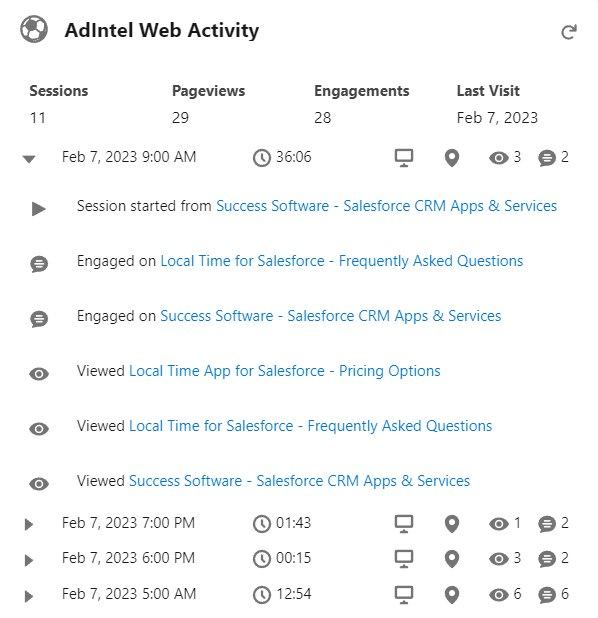
2.8
- Added a new custom object Ad Performance to help you serialize Ad Performance data in Salesforce. From AdIntel Config tab -> Ad Reports subtab, you can configure this custom object to capture Ad Performance data from Google AdWords, Microsoft Bing Ads and Facebook.
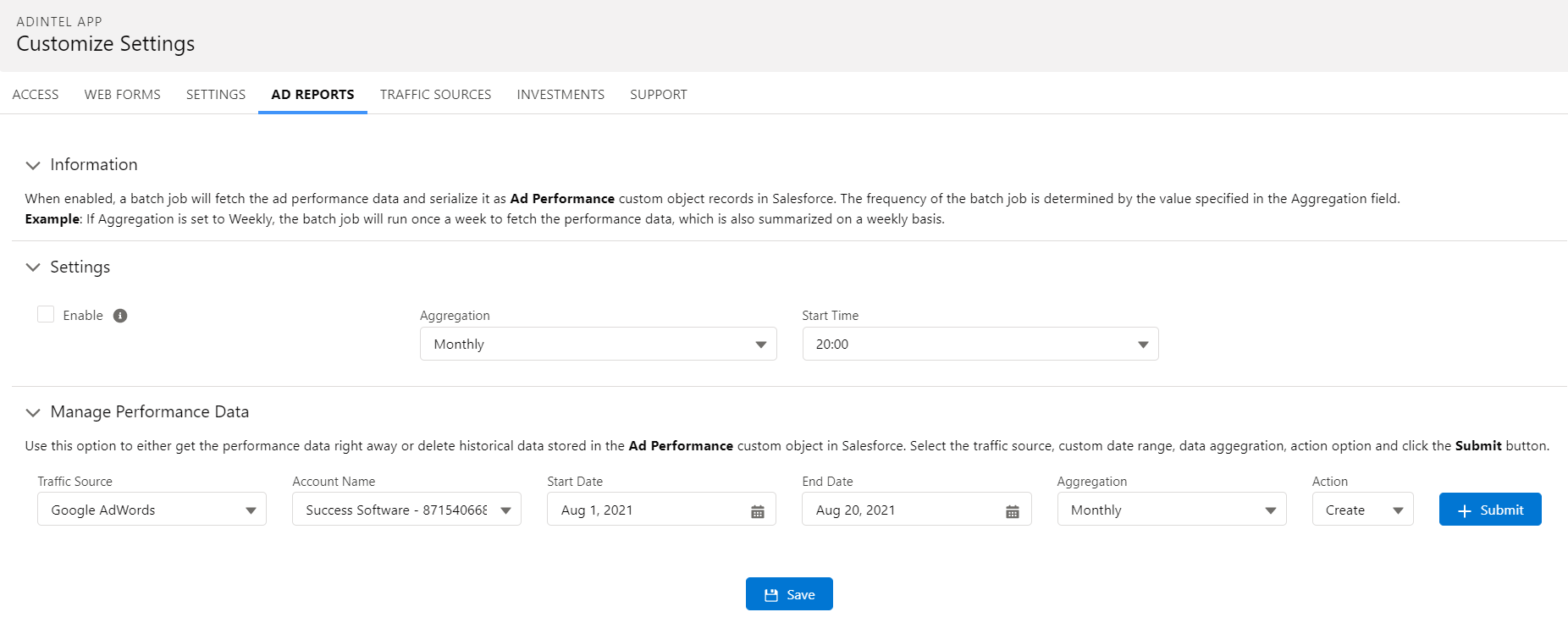
2.7
- Added a new lightning component AdIntel Web Activity Gadget which gives you insights into the browsing activity of the visitor on your website. Using this gadget you can identify which landing pages the visitor had arrived during different times. In addition, you also get a session history during each such visit. The AdIntel Web Activity Gadget can be placed in the Lead, Contact, and Opportunity detail pages.
2.6.2
- This is a minor patch update to the App. After Salesforce Spring 21 release, the background of the AdIntel Config page became transparent instead of showing the standard white color. This patch rectified this issue.
2.6.1
- This is a minor patch update to the App. Fixed an issue with Adhoc Reports. In some cases where performance data is not available for a given Traffic Source, the error message Script thown an exception is shown. This issues is fixed and now the correct error message No data for the selected criteria is shown.
2.5
- Added support for currency conversion. If the cost data obtained from Google AdWords, Bing Ads, and Facebook is in a currency that is different from your Salesforce default org currency, the App will apply a currency conversion step before storing these values in Salesforce.
2.4
- Added support for the latest API versions of Google AdWords, Bing Ads, and Facebook.
2.3
- Added Adhoc Reports tab. Now you can get instant performance reports from Google AdWords and Bing Ads and export the data as a CSV file if needed.
2.2
- Added support for Facebook Ads and the App now can automatically fetch advert and cost information from your Facebook accounts. This information is then visualized in the Salesforce Facebook Dashboard.
2.1
- Converted AdIntel Web Analytics Visualforce component to Lightning Experience component.
- Converted Reports and Dashboards to Lightning Experience.
2.0
- Converted the packaging method of the App from First-generation managed packaging (1GP) to Second-generation managed packaging(2GP). This change impacts only the underlying life cycle development process of the App. It does not change the data model and functionality of the App, and how the end-user interacts with the App. Visit the following link for more information on 2GP packaging:
https://developer.salesforce.com/docs/atlas.en-us.sfdx_dev.meta/sfdx_dev/sfdx_dev_dev2gp.htm

